These authentic German bread rolls, called Brötchen, are a bakery staple part of an authentic German breakfast and for eating Bratwurst on the go! The crusty German rolls are also super versatile and popular at German fast food trucks called Imbissbuden. You're almost always guaranteed to get one when ordering and eating Bratwurst, Currywurst, Frikadellen, and more.
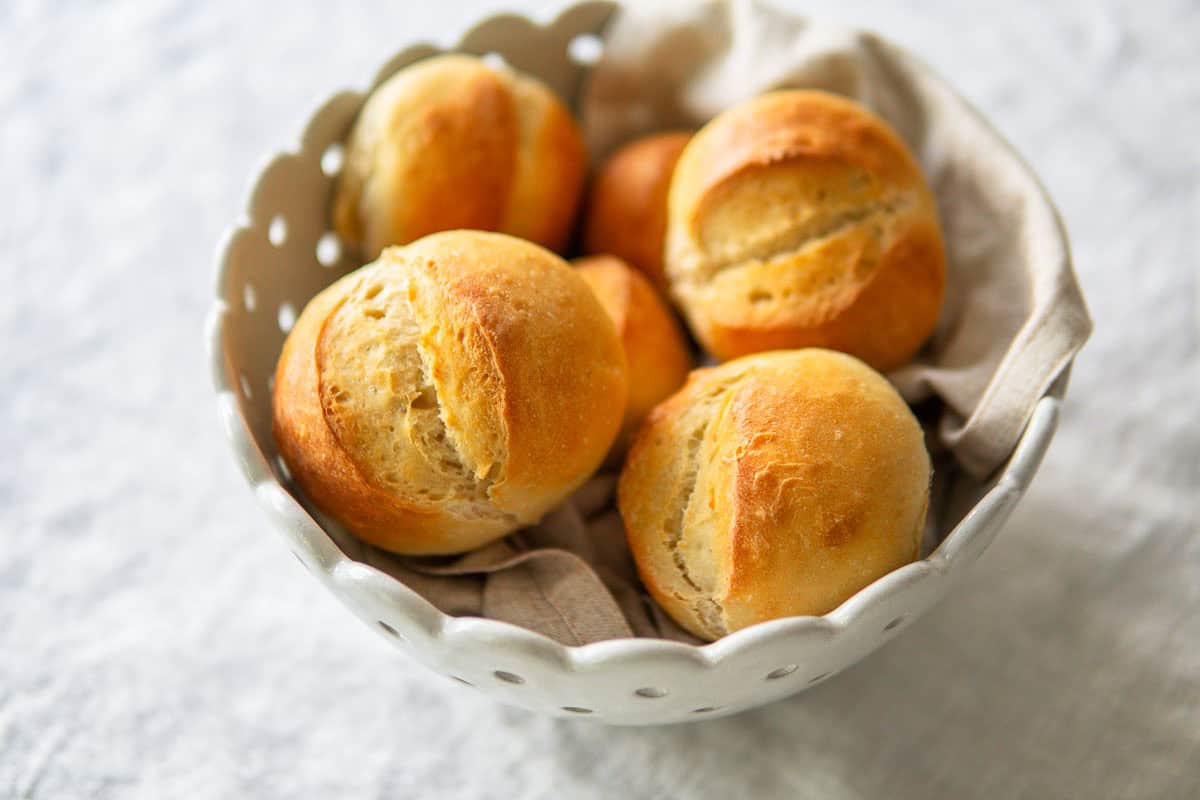
The baguette-like Weizenbrötchen are iconic for placing Schaumküsse in the middle. This is a childhood favorite way to eat them and a must-try for kids' birthday parties!
While this is the classic German Brötchen recipe, other favorite Brötchen to enjoy for a German Frühstück (breakfast) are Müslibrötchen (granola rolls) and Sonnenbluemenkernbrötchen (sunflower seed rolls).
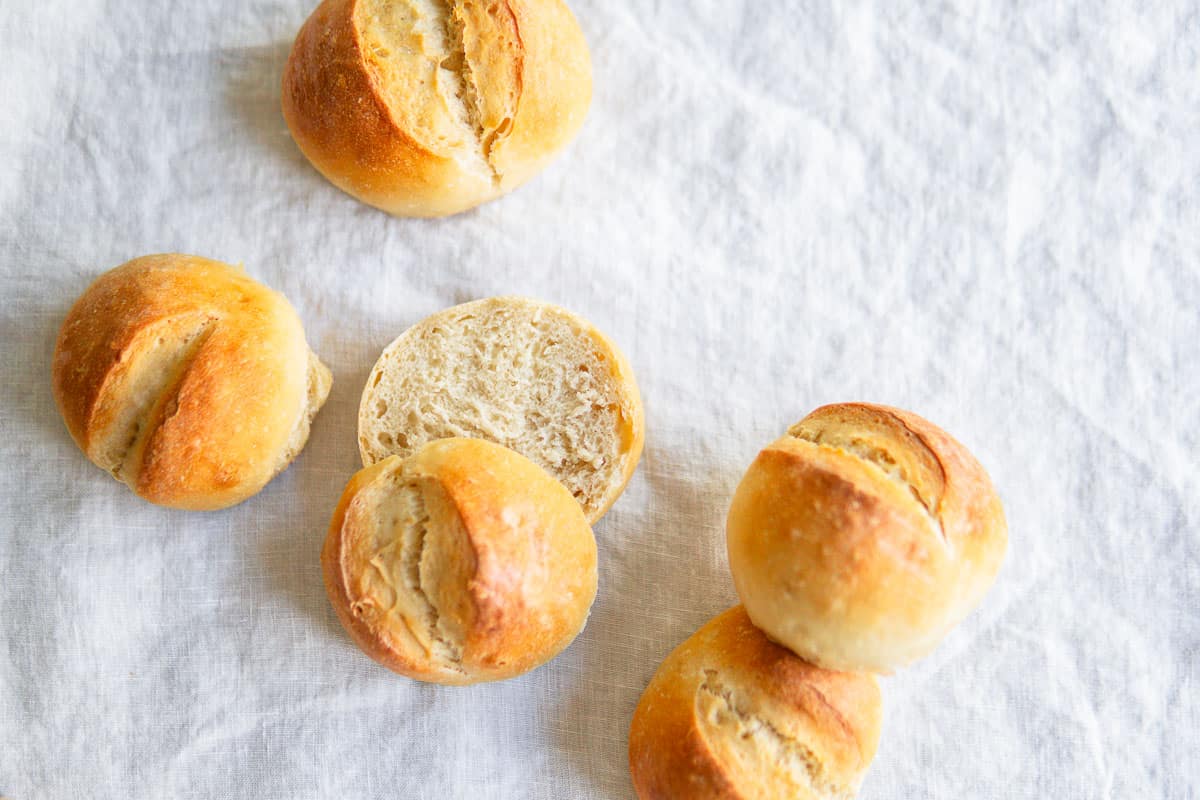
Ingredients
You will likely have all the ingredients at home for making Brötchen, and we'll talk about them now.
- All-purpose flour. I use organic all-purpose flour for almost all of my baking. My flour has an 11.5% gluten content, which is slightly higher than the average all-purpose flour, and buy it at Costco. The higher-than-average gluten content makes the dough super smooth. You could use bread flour as well, which has a gluten content of closer to 13%.
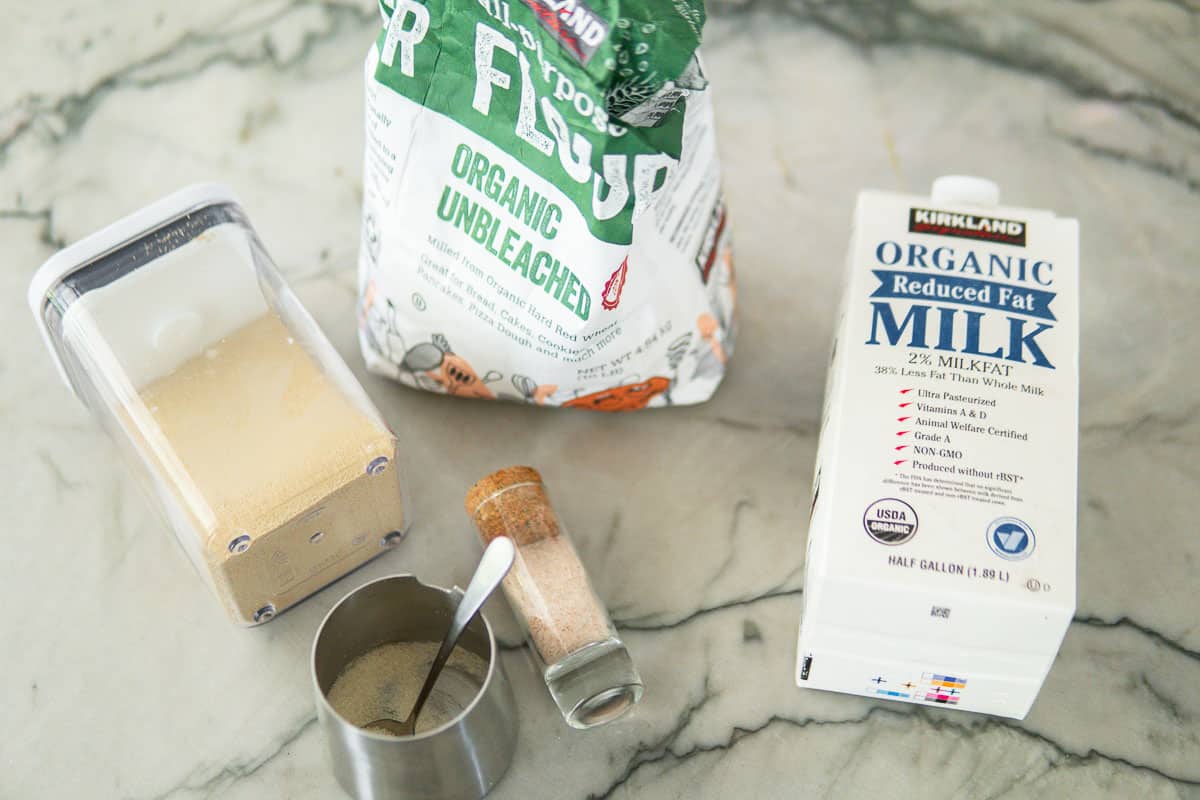
- Sugar. There is a little bit of sugar in the dough (less than one gram per roll).
- Yeast. I use active-dry yeast for all of my baking as it's closest to German yeast. If using fresh yeast, use double the weight that is stated in the recipe.
- Milk. The lactose and fat in the milk help make the bread softer and smoother. If milk is an issue for you, you can substitute the milk with water, but if you do, I would add a tablespoon of soft butter or oil to the dough when making the main dough.
- Salt. I love using a mineral rock salt in baked goods. Sea salt is fine to use.
How to make Brötchen
The most important part of making Brötchen is remembering to make the pre-dough 2 to 3 days ahead of time. So if you want Sunday morning Brötchen, remember to make the pre-dough Thursday or Friday morning at the latest. The rest is easy and no special tools are required other than maybe a pastry brush or a food-grade spray bottle filled with water.
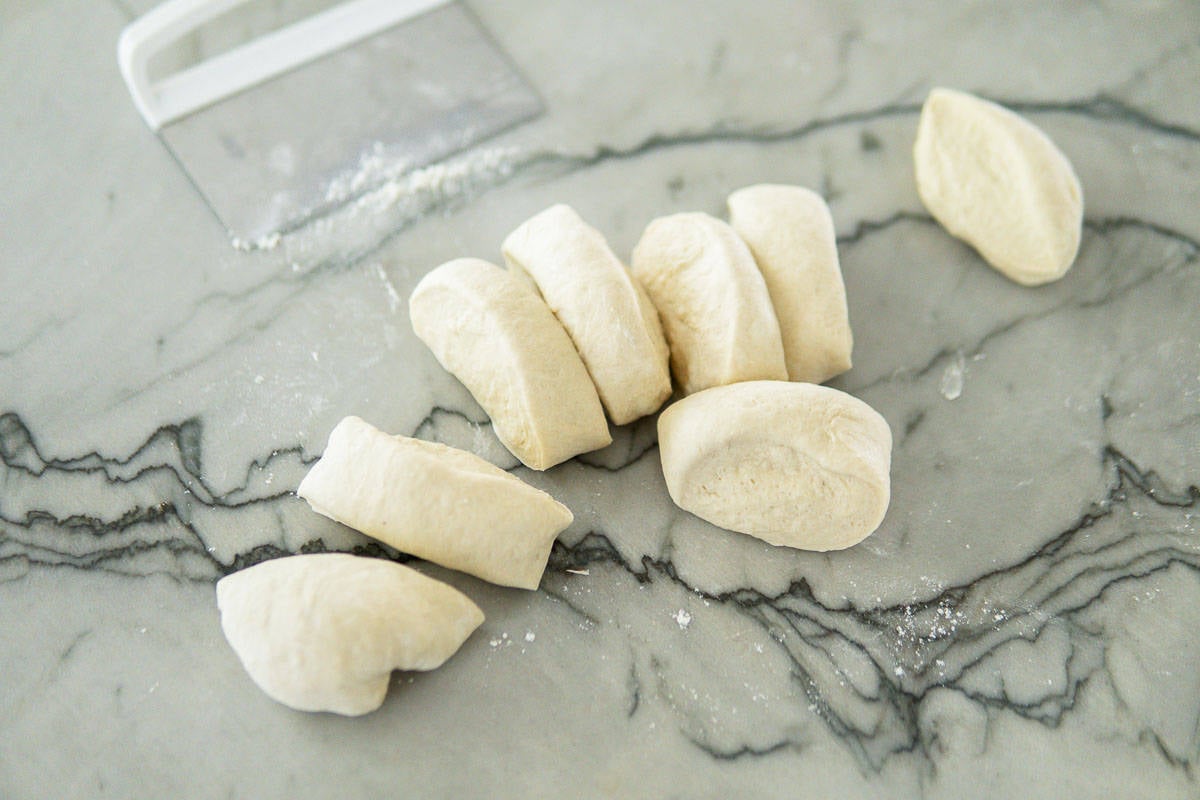
Combine your pre-dough 48 to 72 hours ahead of making your main dough. Simply stir all ingredients together in a bowl, cover airtight, and place in the fridge. I totally recommend making a double batch and freezing your baked rolls for a second German breakfast sometime down the road!
Add together the lukewarm water, sugar, and yeast for the main dough and allow the mixture to bubble up. This should take no longer than 5 minutes. If yeast scares you, here is a free yeast tips sheet you can download here that's normally found inside my German pastry baking online course.

Now mix together all ingredients and the pre-dough and knead until you have a smooth, elastic dough. Cover airtight until doubled in size. Now proceed with dividing your dough into 8 pieces and then shaping your rolls.
When shaping, work with the palm of your hand and pull dough underneath the roll to create a smooth surface.
Place on a baking sheet prepped with parchment paper or silicone baking mats (8 rolls should fit on one baking sheet). Cover with a clean linen towel and allow to rise again for about 45 minutes. In the meantime, preheat your oven and place a casserole dish with hot water on the lower rack or bottom of your oven to help create steam.
Spray or brush with water, score down the middle. Now make a clean, straight cut using a sharp knife or a baking lâme. Then bake the rolls for a total of 15 minutes. Carefully remove the water bowl from the oven, brush the rolls with water again, a place back in the oven for the last 5 minutes of baking or until the outer crust is a nice golden color. The final water brushing will create a shiny finish on the rolls.
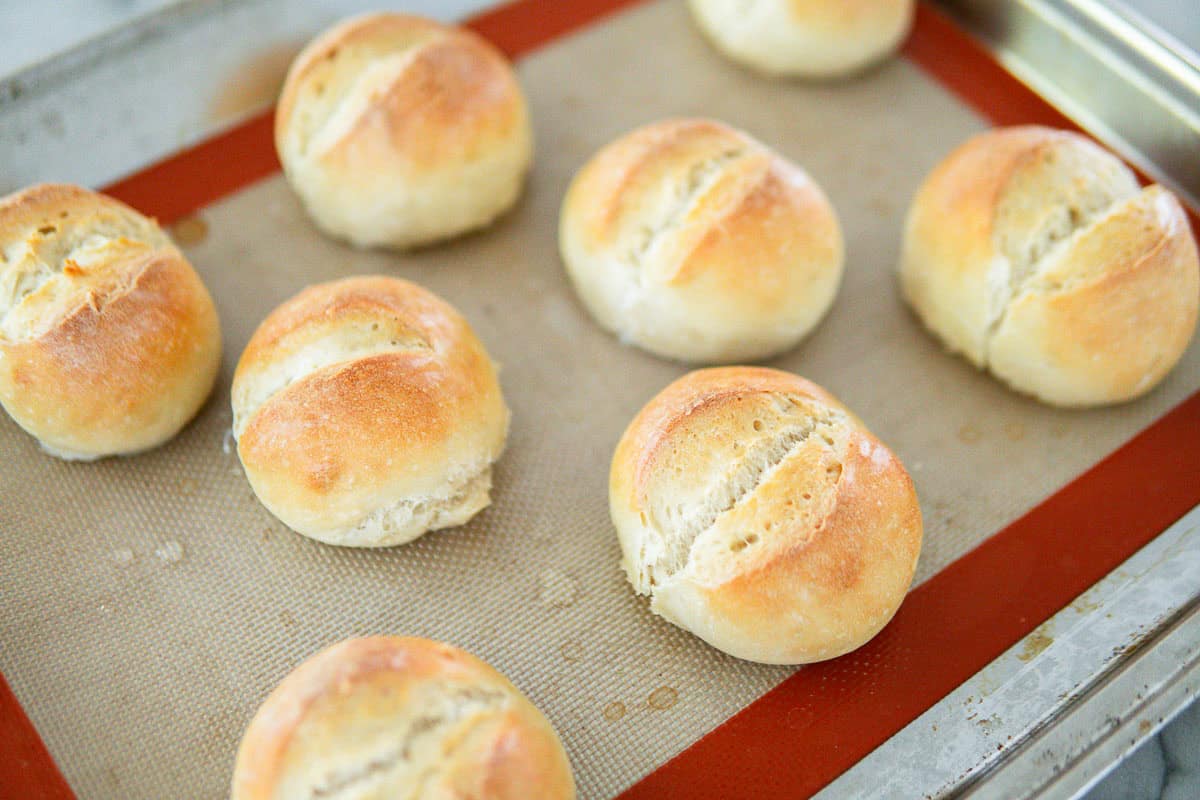
Let cool at least 10 minutes before serving for a German breakfast or with some grilled Bratwurst or find more inspiration below.
How to eat crusty rolls
Crusty rolls called Brötchen are served throughout the day in Germany, especially at breakfast.
Brötchen for a German breakfast
In Germany, crusty rolls, called Brötchen (little breads), are traditionally eaten for breakfast. They are sliced in half and then topped with a variety of toppings from sliced meats and cheeses to butter, jam, Nutella, and more. You can learn more about German breakfast in this post.
Crusty rolls for on-the-go
They are also served with some fast foods at German Imbissbuden (the classic German food trucks).
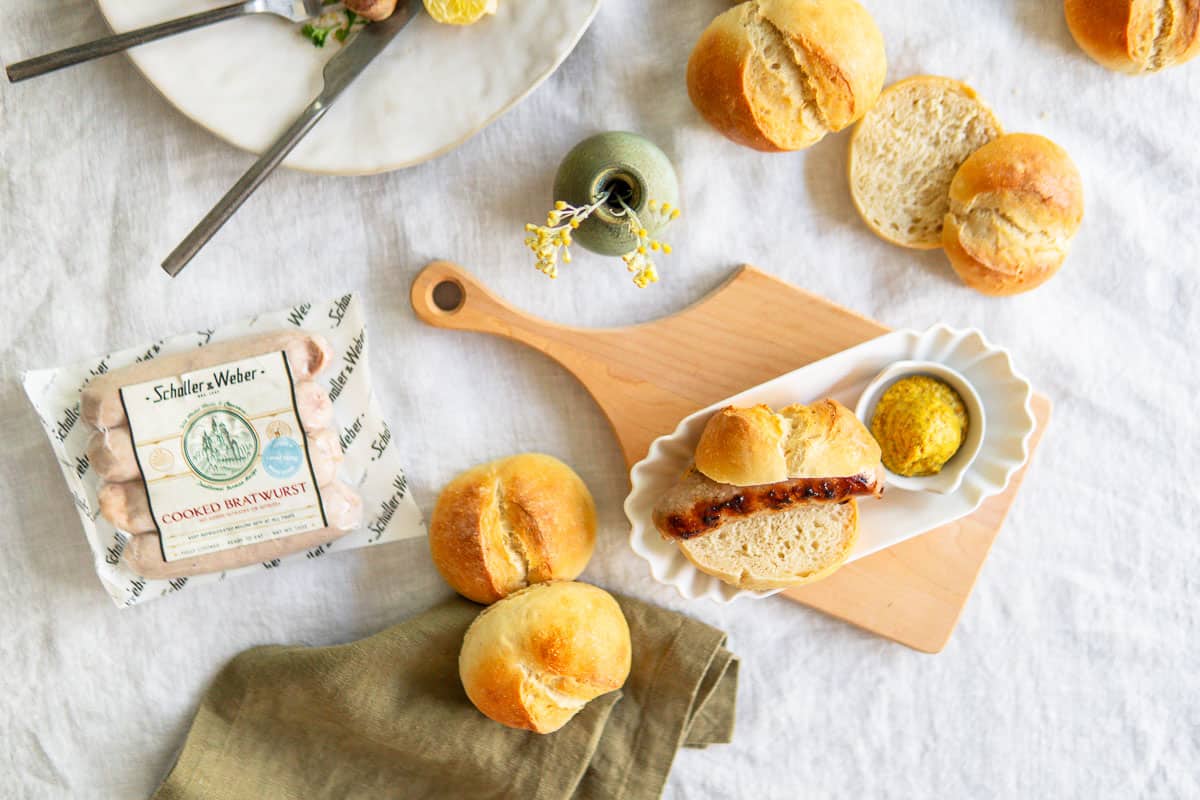
When you order a Bratwurst, it is typically served on a Brötchen. If you're looking for the perfect German Bratwurst in the United States, you must give Schaller and Weber's Cooked Bratwurst a try. They are made in New York City using authentic German recipes and they are the best quality and so delicious!
When you order a Currywurst, it is often either served with a side of fries or a crusty bread roll. Frikadellen (German hamburgers) also come served on Brötchen when on the go.
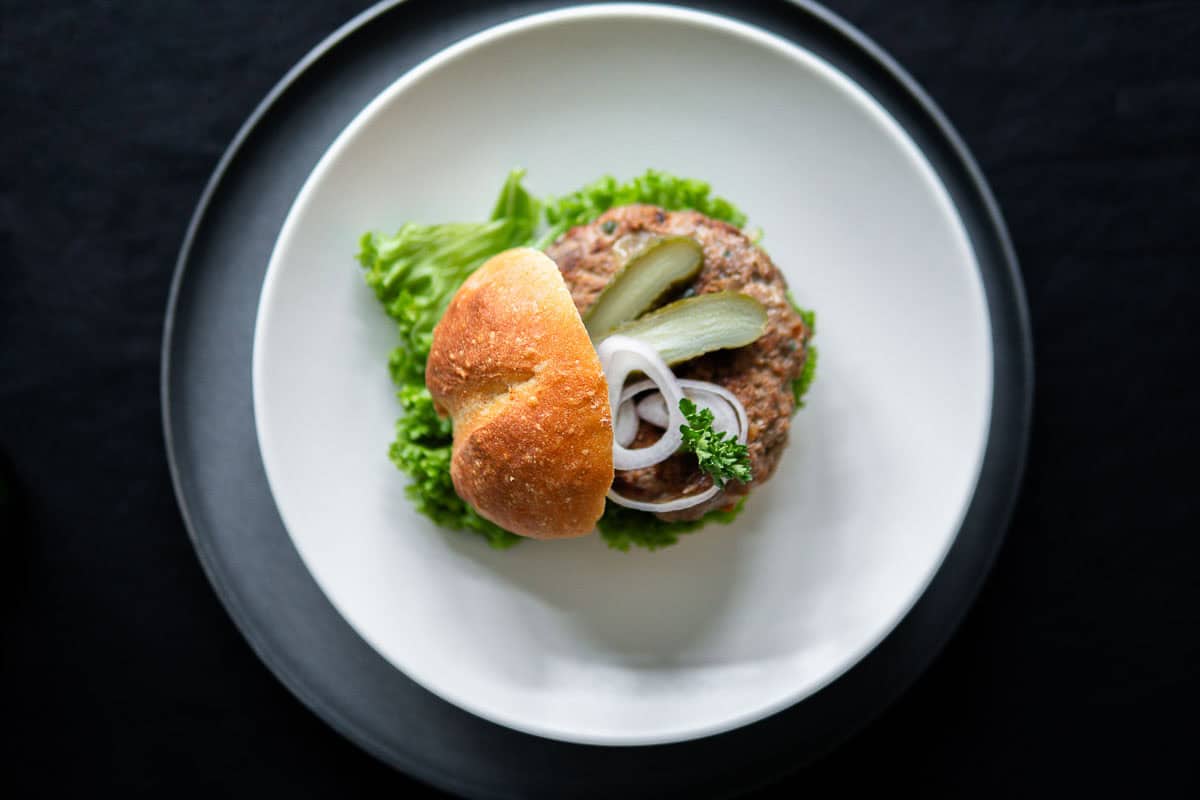
Crusty rolls as a snack
If you have never tried smashing a Schaumkuss on a Brötchen, you must give it a try. You can buy them online here or make them! It was such a favorite way to eat them like this as a child growing up in Germany.
Brötchen as dinner rolls
Brötchen are also sometimes served with grilled goods, as they are lighter bread (compared to the seeded breads that are so popular in Germany) and don't overpower the flavor of grilled goods for dinner. I also love these German pull-apart slider buns called Partybrötchen for grilling and you must try my pretzel beer bubble bread at your next grill party too!

Classic German rolls recipe (Brötchen)
Equipment
- 1 Pastry Brush For brushing water onto the rolls before baking and again 10 minutes into baking.
- 1 spray bottle As an alternative for brushing on water, you could instead spray it on.
- 1 baking lâme To score (cut into) your rolls before baking. You could also use a small, extra sharp knife.
Ingredients
Pre-Dough
- 130 grams all-purpose wheat flour
- 90 grams water
- 1 gram active dry yeast
- 3 grams salt
Main Dough
- 1 pre-dough
- 305 grams all-purpose wheat flour
- 70 grams water 80 degrees C/ 175 degrees F
- 100 grams milk whole milk, cold
- 3 grams active dry yeast
- 6 grams salt
- 6 grams granualted sugar
Instructions
- Combine all ingredients to the pre-dough (also called a poolish) )and allow to rest in an airtight bowl in your fridge for 48 to 72 hours. The volume should have at least doubled and the dough should be nice and bubbly.130 grams all-purpose wheat flour, 90 grams water, 1 gram active dry yeast, 3 grams salt
- Combine the warm water, sugar and yeast and allow to get bubbly, which should take about 5 minutes. If it does not get bubbly, consult this yeast tips sheet that you can download here for free and that is part of my German pastry online baking class.70 grams water, 6 grams granualted sugar, 3 grams active dry yeast
- Add all other ingredients and predough and knead on the lowest setting for 5 minutes. Then increase to the second setting for another 8 minutes.305 grams all-purpose wheat flour, 100 grams milk, 6 grams salt, 1 pre-dough
- Cover the bowl and let rise for one hour, folding the dough on a floured work surface 30 minutes in.
- Knead the dough for a couple of minutes and shape 8 dough balls of about 90 grams (3.14 ounces) each. Place seam side down on a baker's linen or a piece of parchment paper and cover with the linen or a clean towel. Allow to rest for another 45 minutes. At this time, preheat your oven to 230 degrees Celsius or 445 degrees Fahrenheit (place an oven-safe bowl full of hot water on the bottom rack while preheating to create steam).
- Spray or brush on hot water, then cut straight down about a half inch into each roll.Bake in a preheated oven for 10 minutes. At this point, open the oven door wide to release steam. Then continue baking for 5 more minutes.Now remove the hot water AND the rolls, brush on more hot water, and return to the oven to finish baking for the last 5 minutes or until golden in color. Brushing on the water towards the end of baking helps to give the rolls a shiny finish just like from the bakery.Your rolls will bake for 20 minutes in total.
- Transfer to a cooling rack and allow to cool for 10 or more minutes before eating. Guten Appetit!
Notes
Freezing Tips
Because it's always nice to have some Brötchen in the freezer for when you would like to have a spontaneous Sunday morning German breakfast, here some tips for freezing Brötchen. I recommend doubling the batch, then baking per the usual directions. It's better to cut the baking time by a couple of minutes to make sure they don't get too dark when you're freezing and reheating them. After baking, allow to cool completely. Then store in a freezer safe storage back for up to 3 months. When ready to bake, preheat oven to 350 degrees Fahrenheit. Remove the desired number of Brötchen from the freezer bag. Get them just barely wet by letting water run over the rolls. Place on a baking sheet, then bake for about 8 minutes or until the outside feels crunchy again.Yeast tips
For tips on working with yeast, download this free yeast tips guide.Nutrition


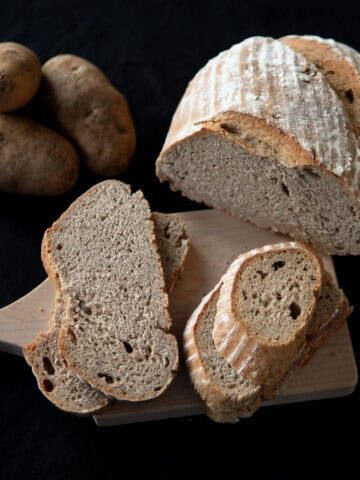
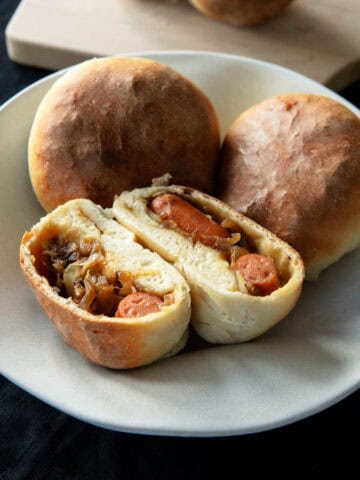
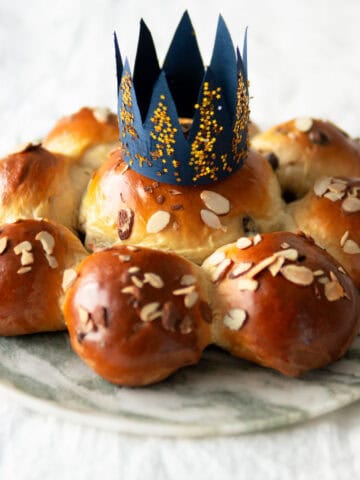
Oscar
First time doing it. I'll make double for next time
dirndlkitchen
Would totally recommend that too, as they freeze so well to be reheated for later. I will add it in as a note! Thank you!
Patrick Down
Another fantastic recipe Sophie! I’ve tried other Brötchen recipes, but this is my first one making a pre-dough and I think that made a huge difference. Excellent crispy exterior, perfect interior texture with incredible taste! Made a double batch and froze the majority. Before reheating, I pull a few rolls out of the freezer and let them sit at room temperature for 30 minutes and then spray them with water before reheating. They work perfect for breakfast or lunch sandwiches. Vielen Dank für alles!
Patrick
Sophie Sadler
Patrick, I'm thrilled that you had success with this Brötchen recipe! Thank you so much for the super nice comment!
Diane S
Hi Sophie, after weighing & mixing the Poolish pre-dough ingredients, there seems barely enough liquid (90g) to absorb all the flour (130g). I tried it 3xs with different flours: Gold Medal Bread Flour, Gold Medal All-Purpose Flour, and Bayerisches Weizenmehl Type 405. All turned out the same. Is it supposed to create a fairly dry small sticky ball of dough with no liquid remaining?
I'm guessing it's not like my Amish Bread "starter" which is very liquid and bubbles/doubles after 10 days at room temp.
dirndlkitchen
Hi Diane, thanks for your feedback! This dough does have a lower hydration than some other German roll recipes, but if it felt too dry, I’d suggest adding 20-30 g more water in the main dough to bring it to about 65% hydration. Also, make sure to mix thoroughly, as flour can take time to absorb liquid. Let me know if that helps! Sophie
Mimi
5 stars for this beautifully posted recipe. Easy to understand and visually pleasing. Made the Brötchen twice now and they still come out tough. I may have to wait until the dry MN winter is over ? Even when the dough has doubled I can tell how tough the dough already is. There are no air bubbles inside the Brötchen. I will keep going and hope to perfect the recipe. My first instinct would be to increase yeast but 4g should be enough for this small amount of flour. (All my other yeast recipes come out perfect currently so the yeast is in good shape / Costco)
dirndlkitchen
Hi Mimi, making sure the pre-dough and the main dough are sealed airtight would help. I am also wondering which flour you use? The dry air could have an effect on your dough. Adding more moisture in your case could help.
Mimi
I would love some help to figure out this recipe. I’m making it for the 4th time. The rolls are tough. The dough already is tough. I have a feeling there is not enough water in the recipe. I would love some feedback on how the dough should feel/ looks like.
They are not rising as much and the inside is pretty tense. I measure everything with a food scale.
dirndlkitchen
Hi Mimi, I have made this recipe quite a few times using all-purpose flour (I usually buy the organic AP flour from Costco, but others have worked great as well), and it always worked fine. I am wondering which flour you use by chance? The dough should be smooth and fairly dense once it's formed and before the initial shaping. However, it will relax enough for shaping during the resting period. Do you cover the bowl airtight (with plastic wrap or a reusable silicone bowl cover) when it's resting? I would recommend this for the pre-dough too, as any drying out in that phase could cause your dough to be more dense. I hope this is helpful! Please keep me posted on how it's going!
Brittany Weidauer
Hi Sophie, I’m going to try this recipe, but I’m afraid of using yeast and the Brötchen just tasting… yeasty. Not that I don’t like the yeast-y taste, it’s just that all of the classic brötchen I ate in Germany never had an overpowering yeast-y taste; whenever I’ve made homemade breads with yeast, there’s always that yeasty taste. Do you know if there is any way to avoid this? Thanks!
dirndlkitchen
Hi Brittany! The preferment in this rolls recipe will help to get rid of the yeasty taste you're talking about! These Brötchen taste similar to baguette. I hope you give them a try! Sophie
Rachel
I'm making these today and my polish is in the fridge. How long should I take it out prior to adding to other ingredients? Thanks
dirndlkitchen
No need to let the poolish rest at room temp before adding it in with the other dough ingredients. I hope you love these Brötchen and try many more of my German recipes! Sophie
Anita
Hi Sophie
Would it be possible to use gluten free flour as I am coeliac?
Thanks.
Anita
dirndlkitchen
I have heard that people have the most success using Cup4Cup gluten free flour when making yeast doughs, but I haven't tested it myself. Please keep me posted on how it goes in case you try it! Sophie
anita chastain
can I refrigerate the formed rolls overnight and bake in the morning?
dirndlkitchen
If you do, I would recommend not going longer than 48 hours with the sponge you create ahead of time. I hope you love these Brötchen as much as we do! Sophie